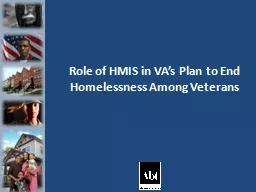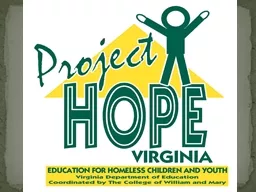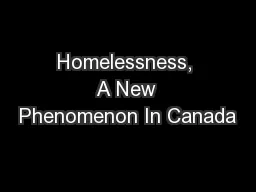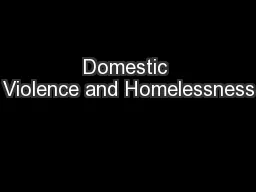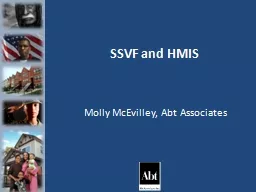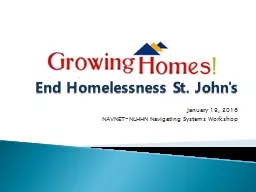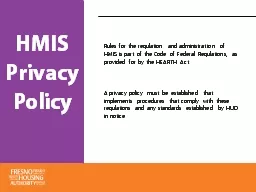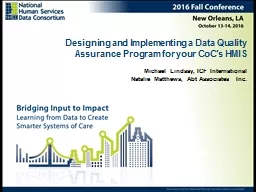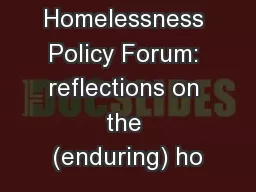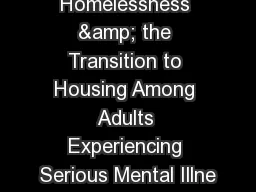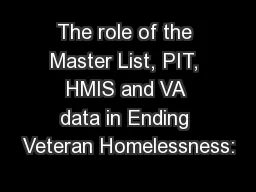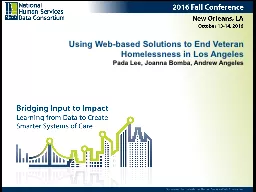PPT-Role of HMIS in VA’s Plan to End Homelessness Among Veter
Author : ellena-manuel | Published Date : 2015-09-23
Secretary Shinsekis Goal End Homelessness Among Veterans in 5 Years We will provide new help for homeless Veterans because those heroes have a home its the country
Presentation Embed Code
Download Presentation
Download Presentation The PPT/PDF document "Role of HMIS in VA’s Plan to End Homel..." is the property of its rightful owner. Permission is granted to download and print the materials on this website for personal, non-commercial use only, and to display it on your personal computer provided you do not modify the materials and that you retain all copyright notices contained in the materials. By downloading content from our website, you accept the terms of this agreement.
Role of HMIS in VA’s Plan to End Homelessness Among Veter: Transcript
Download Rules Of Document
"Role of HMIS in VA’s Plan to End Homelessness Among Veter"The content belongs to its owner. You may download and print it for personal use, without modification, and keep all copyright notices. By downloading, you agree to these terms.
Related Documents

